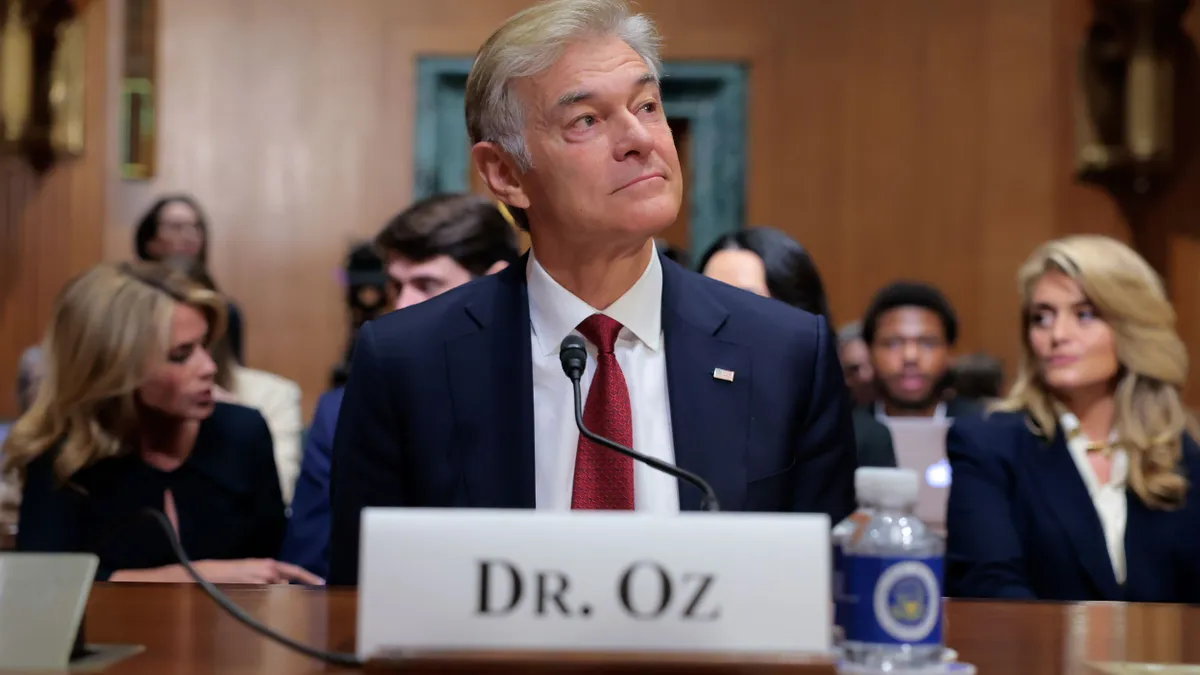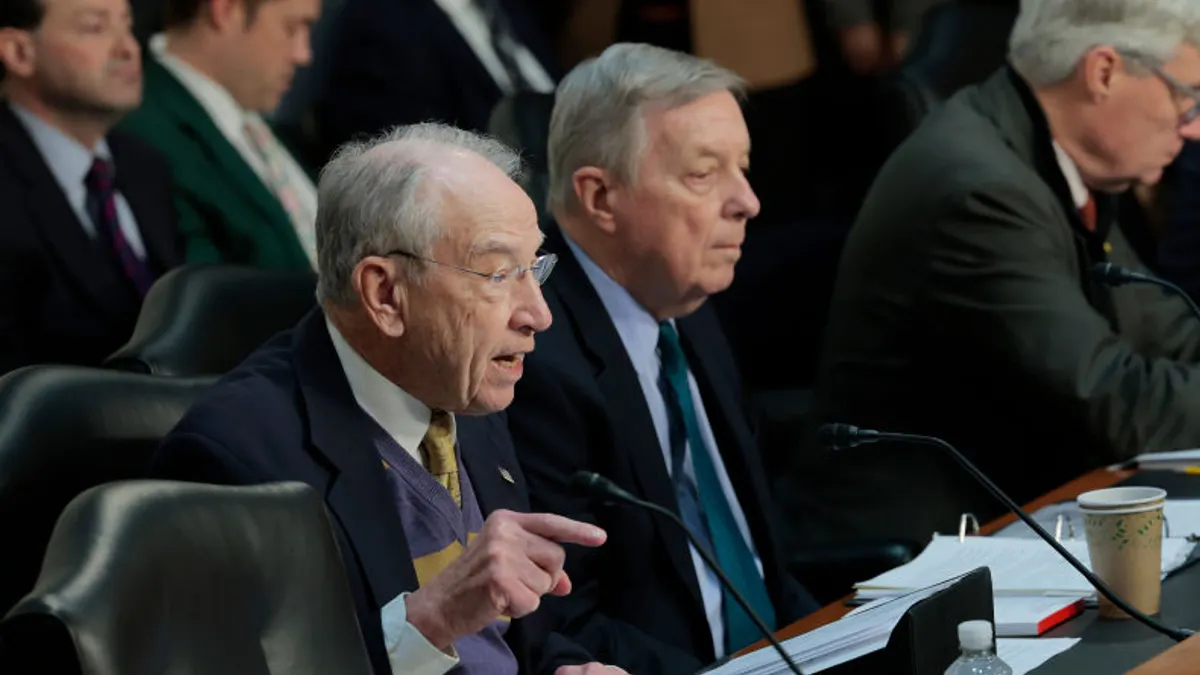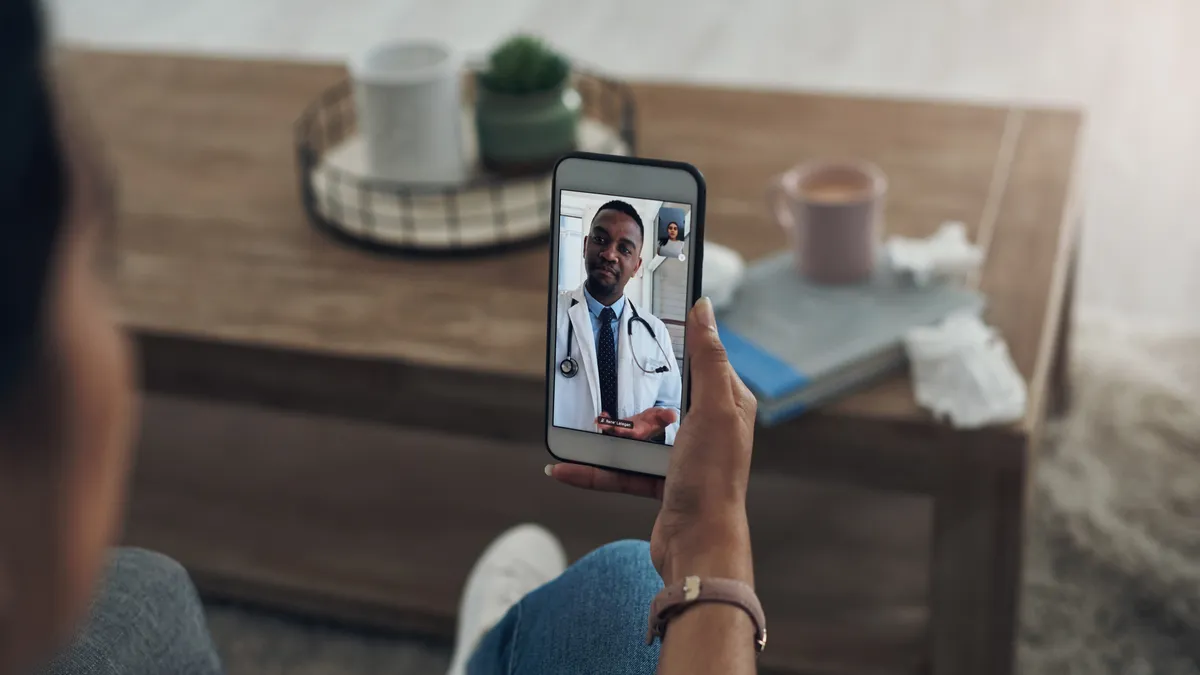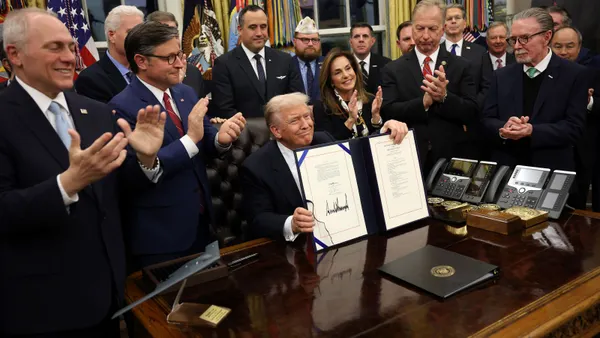Flexibilities for Medicare telehealth coverage are back in place after Congress passed legislation to end the longest government shutdown in U.S. history this week.
The stopgap funding law, which was signed by President Donald Trump late Wednesday, reinstates the pandemic-era virtual care policies through Jan. 30. Those policies include changes like eliminating geographic restrictions for virtual care and allowing all eligible Medicare providers to offer telehealth.
Additionally, the spending plan reauthorizes the CMS’ Acute Hospital Care at Home program — another initiative started during the pandemic that permits hundreds of hospitals across the country to provide inpatient level care in patients’ homes — through Jan. 30.
The spending law comes after telehealth providers were left in limbo for six weeks during the government shutdown, forced to either continue offering virtual care to Medicare beneficiaries without clarity on reimbursement or shutter their programs.
And though the legislation allows for retroactive payment for telehealth services offered since the shutdown began in October, the “clock is ticking” before the flexibilities could expire again, said Kyle Zebley, senior vice president of public policy at the American Telemedicine Association and executive director of the group’s advocacy arm ATA Action, in a statement Thursday.
Telehealth groups argued the healthcare sector needs certainty on virtual care coverage in Medicare.
“Short term, and even year-to-year, extensions are no longer sustainable for a care model that is now central to how America delivers health care,” Chris Adamec, executive director of the Alliance for Connected Care, said in a statement. “Telehealth is an integrated part of care delivery, and the current system needs to reflect that.”
Providers, telehealth advocates push for long-term solution
The telehealth flexibilities were first put in place during the pandemic to preserve access to care amid social distancing. The policies significantly expanded telehealth in Medicare, where coverage was previously mostly restricted to beneficiaries living in rural areas or for certain types of facilities or services.
Though the flexibilities are popular with lawmakers on both sides of the aisle, they've recently been caught up in funding fights between Democrats and Republicans on the Hill.
In December, a bill that would have preserved the flexibilities for two years fell apart at the last minute, and a replacement spending plan only extended them through March. Another short-term deal kept them in place for six more months.
But lawmakers missed the deadline to extend them again in September, as they clashed over more generous financial assistance for Affordable Care Act plans that’s set to expire at the end of the year.
Now, Congress has inked a deal to reopen the government without action on those subsidies. Meanwhile, the lapse in telehealth flexibilities meant fewer Medicare beneficiaries could access virtual care during the shutdown, according to an analysis by the Brown University School of Public Health’s Center for Advancing Health Policy through Research.
The share of visits provided through telehealth declined by 24% in the first 17 days of October compared with July through late September, the report found. The impact was worse in some states, like Florida, Washington, Maryland and New York, where telehealth use fell by nearly 40% or more.
The decline is likely due to uncertainty among clinicians on whether virtual care visits would be reimbursed retroactively after the government opened again, researchers wrote.
Christi Siedlecki, CEO of Grants Pass Clinic, an independent medical group in Southern Oregon, told Healthcare Dive last month they had canceled telehealth appointments because the group didn’t want to provide services that weren’t covered.
The federal government should make the flexibilities permanent, she said.
“The cat is out of the bag. They can’t shove it back in. People are used to being able to get telehealth,” Siedlecki said. “In rural areas like mine, it’s something that we should have done a long time ago, because it’s so beneficial to our patients.”
The limbo is also disruptive for patients, especially those that might struggle to reach in-person care, Dr. Helen Kinsman Hughes, medical director of the office of telemedicine at Johns Hopkins Medicine, told Healthcare Dive in October.
For example, patients who recently had a stroke or seizure might not be able to drive, so virtual appointments to review test results to discuss symptoms can be really beneficial.
Meanwhile, short-term extensions and uncertainty are like a roller coaster for providers, she said.
“People are exhausted by all of the changes and the stresses of the past six years,” Hughes said. “So it does feel kind of cruel to continue to have these cliffs for something that I think has complete bipartisan support.”























